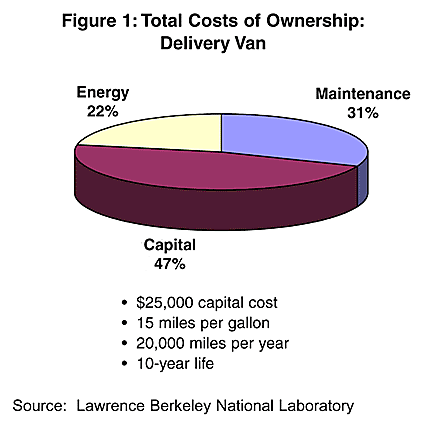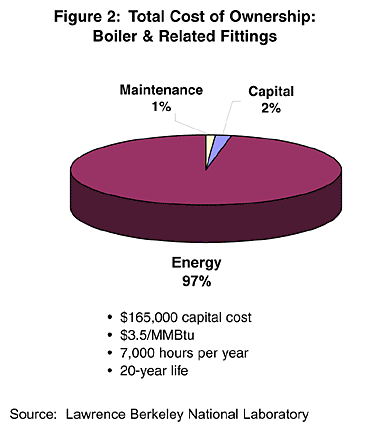The Semantics of Energy Efficiency
This month’s column shares two different but related concepts. The common thread is the role of communication in overcoming industry resistance to energy-efficient outcomes.
Energy Efficiency: Just what do you mean? When you work every day in a certain profession, it’s easy to overuse jargon. Outsiders might not have the same understanding of certain terms. For instance, if you were to poll five different plant managers in the industry, here’s what their interpretations of the term "energy efficiency" may be:
- "We just put in a back-up generator, so sure, we’re energy-efficient."
- "We switched from coal to natural gas to meet our emissions compliance thresholds, so yes, we’re energy-efficient."
- "We have the capability of dual fuel firing on all our boilers. You bet we’re energy-efficient."
- "Our procurement division gives us energy efficiency by actively seeking the lowest fuel commodity prices available."
- "We are energy efficient because we use renewable waste materials for boiler fuel."
It may amuse (or shock) you to know that some companies claim to be energy-efficient because they participate in municipal recycling programs or because they market biodegradable product alternatives. All of these activities are good things, but none of them comprise energy efficiency. It’s a struggle to get manufacturers to understand that energy efficiency is an opportunity to reduce costs, build revenues and control risk. For some reason, no one ever asks what is meant by "energy efficiency." Everyone has a preconceived notion of the term’s meaning. Energy efficiency is a business opportunity for those who embrace it. Much more is said about that in a paper entitled "Strategic Industrial Energy Efficiency" (www.ase.org/content/article/detail/1012).
Capital spending habits. Rarely does a manufacturing organization have finance experts who are conversant in engineering (and vice versa). Let’s not discredit the finance professionals; they’re doing their part to help their company by carefully tracking where the dollars come and go. But uninformed financial decisions can be counterproductive. A little encouragement may be needed to get efficiency upgrades approved. I like to use a simple, yet effective picture (Figures 1 and 2).
Consider the total cost of ownership for an asset. This includes 1. up-front costs such as design, acquisition and setup, and 2. operational costs accruing over the economic life of the asset, including maintenance, repairs, any operating inputs such as energy and salvage value (cash back, or a "negative" expense) when the asset is removed from service. The finance person is almost always familiar with the cost profile for an asset like a delivery van, since it’s very similar to that of a personal automobile. Figure 1 shows the total cost of operation for a typical delivery van.
Given their desire to economize operations, finance people will automatically focus their attention on the biggest piece of this pie chart, which is the capital (acquisition) cost. Quite simply, they try to avoid capital expenses (especially if they are not investments in core processes). If spending is necessary, they want to keep the outlay as small as possible. In the case of the delivery van, their best bet for reducing total costs of ownership is to ensure that capital cost–the biggest proportion–is minimized.
Now consider a steam system and its related fittings. A finance person may expect the total costs of ownership for utility systems to be proportionately similar to that of the delivery van. But that’s not true for a boiler that runs at 80 percent (or similar) load factor. See Figure 2.
Yes, the boiler is more expensive than a delivery van. Yes, the steam system will function, more or less, without diligent investment in steam traps, insulation and other fittings. But the handful of dollars saved that way are dwarfed by unnecessary fuel waste sustained by a steam system that must devote the first 20 percent (or more) of its send-out to feed leaks and radiant heat losses. Note that the data for both Figure 1 and Figure 2 are a few years old: The indicated fuel price of $3.50/MMBtu is easily double that now, which only underscores the point.
Message to the finance people:
1. Understand the total cost of operation for an asset. Make business-smart investments that return the most value to the company.
2. Don’t have the money to invest in improvements? Think again–you’re already spending a great deal of money on fuel.
3. Get started with any of a number of low-risk, quick payback activities (See a summary of dozens of steam plant audits compiled by Enbridge Gas Distribution’s Steam Saver program—PDF format).
4. You can "borrow" money from within the existing budget. Look for a budget line item like insurance or audit expense. The premium for those services may be a one-time annual outlay, seven or eight months away. Funds borrowed from that account could be used to implement an energy improvement that pays for itself in only 60, 30 or even fewer days. Once payback is achieved, the savings continue as new cash flow, making the business better off than it was before.
5. Don’t know what payback to expect on an energy improvement? Take advantage of a free, confidential, one-day energy audit offered by any one of 26 Industrial Assessment Centers funded by the U.S. Department of Energy. Or …
6. Use the DOE’s Steam System Assessment Tool. This software allows the user to model a subject steam system and estimate the cost impact of making improvements. Use this software to prioritize your improvement opportunities.
Or, call the DOE’s Energy Efficiency and Renewable Energy Clearinghouse
877-EERE-INF(O) or 877-337-3463 about any of these items.
Get an easy-reading document entitled "Checklist for Getting Management Approval" for steam projects. There are two versions:
- Industrial (PDF format)
- Commercial/institutional (PDF format)
Your questions and comments are welcome. Please reply with your energy management question, concern or story. I’ll respond to each, and publish the more provocative discussions in this column. E-mail crussell@ase.org, and please include your phone number if you wish to discuss the item prior to publication.


